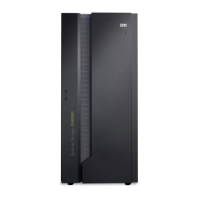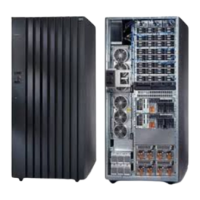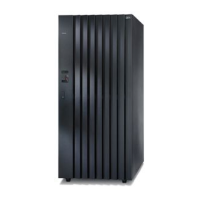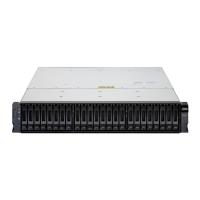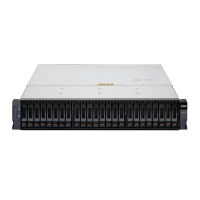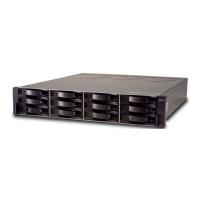Chapter 4. Physical conguration
Physical conguration planning is your responsibility. Your technical support representative can help you
to plan for the physical conguration and to select features.
This section includes the following information:
• Explanations for available features that can be added to the physical conguration of your system
model
• Feature codes to use when you order each feature
• Conguration rules and guidelines
Conguration controls
Indicator features control the physical conguration of the storage system.
These indicator features are for administrative use only. The indicator features ensure that each storage
system (the base frame plus any expansion frames) has a valid conguration. There is no charge for these
features.
Your storage system can include the following indicators:
Expansion-frame position indicators
Expansion-frame position indicators flag models that are attached to expansion frames. They also flag
the position of each expansion frame within the storage system. For example, a position 1 indicator
flags the expansion frame as the rst expansion frame within the storage system.
Administrative indicators
If applicable, models also include the following indicators:
• IBM / Openwave alliance
• IBM / EPIC attachment
• IBM systems, including System p and IBM Z
• Lenovo System x and BladeCenter
• IBM storage systems, including IBM System Storage ProtecTIER
®
, IBM Storwize
®
V7000, and IBM
System Storage N series
• IBM SAN Volume Controller
• Linux
• VMware VAAI indicator
• Storage Appliance
Determining physical conguration features
You must consider several guidelines for determining and then ordering the features that you require to
customize your storage system. Determine the feature codes for the optional features you select and use
those feature codes to complete your conguration.
Procedure
1. Calculate your overall storage needs, including the licensed functions.
The Copy Services and z-Synergy Services licensed functions are based on usage requirements.
2. Determine the models of which your storage system is to be comprised.
3. For each model, determine the storage features that you need.
©
Copyright IBM Corp. 2019 55
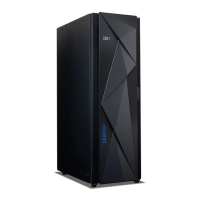
